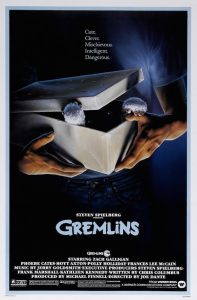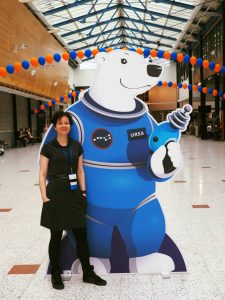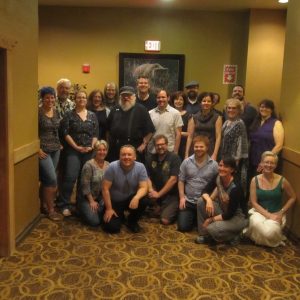Hey, what have you been up to since November, Simone?
November, huh? It’s been so long, I even need a lousy fake interview set-up to get these rusty gears going.
Mostly, I’ve been a good little translator-bot. I translated a net total of 532,000 words of text, fiction and non-fiction, one of them an epic MCU in-universe encyclopaedia which nearly killed me with its legions of weapons and gadgets, half of them real things, half of them Marvel inventions (yeah, thanks for nothing, Captain America!). I copy-edited a smaller amount, about 364,000 words, also fiction and non-fiction, one of them an epic DC Comics encyclopaedia which nearly drove me crazy with its (sorry, DC) stupid timelines. Superheroes galore for me!
I read 25 books as a judge of the Seraph (original works) and the Kurd-Laßwitz-Preis (translated works), both German sff awards. I co-conceptualized and co-hosted an awesome three-day workshop about storytelling as a tool for photographers with my camera-wielding partner in crime Chrononauts Photography.
And I last-minute-applied for Viable Paradise, because it sounded like pure workshop goodness. Which turned out very well so far: I don’t think I have ever experienced such a warm (virtual) welcome anywhere.
Did you write stories?
I wrote a thing for my VP application. Next step: improving my miserable story/workshop ratio. Feeling like the fraud of frauds here …
But you did write something, somewhere, didn’t you?
I didn’t even do much social media. Just work, eat and see to it that my back won’t give out, work again and then some more, sleep, repeat. Every single day (I had three free days over Easter, yay!). It felt like a never-ending nightmare, and that’s why I’m taking some time off now. Otherwise things would become an endless slog towards self-annihilation. Not cool.
What about stories, passive mode?
I didn’t read much apart from the nominated titles for the awards. There was T. Kingfisher’s romance/rpg adventure novelization hybrid Clocktaur Wars, which I thoroughly enjoyed (gonna write more about that one). I went to the movies a few times, to avoid becoming a hermit and such: I liked The Shape of Water – not the deep story about encountering the Other I expected from the trailer; but a beautifully shot film about misfits. Black Panther and Thor: Ragnarok where my favorite MCU movies so far, one for its vision and coolness, and the other for combining heroics and fun.
I played some Overwatch. I also played Fortnite, but that was for a job (and it’s probably not my cup of tea). Ah, but now, as this full-frontal march towards burnout is at its end, I’ve been reading nice things again. A short story collection by Roger Zelazny. What a feast! I started reading the Sword and Sonnet anthology recently. And after that, Murderbot vol. 3 is waiting for me. Oh, and I picked up Divinity 2 again, so good (gonna write about it).
What now?
There’s still some editing work and small jobs to do. Probably should be looking for bigger jobs, too, but apart from that, I feel like I could sleep a whole month.
Most of all, I miss my lizards and robots and powerful ladies, and my random ramblings about stories and stuff. But I’m beginning to find back to my own words, so stay tuned. Winter is coming! Again! Ugh, this has been a long time off …





